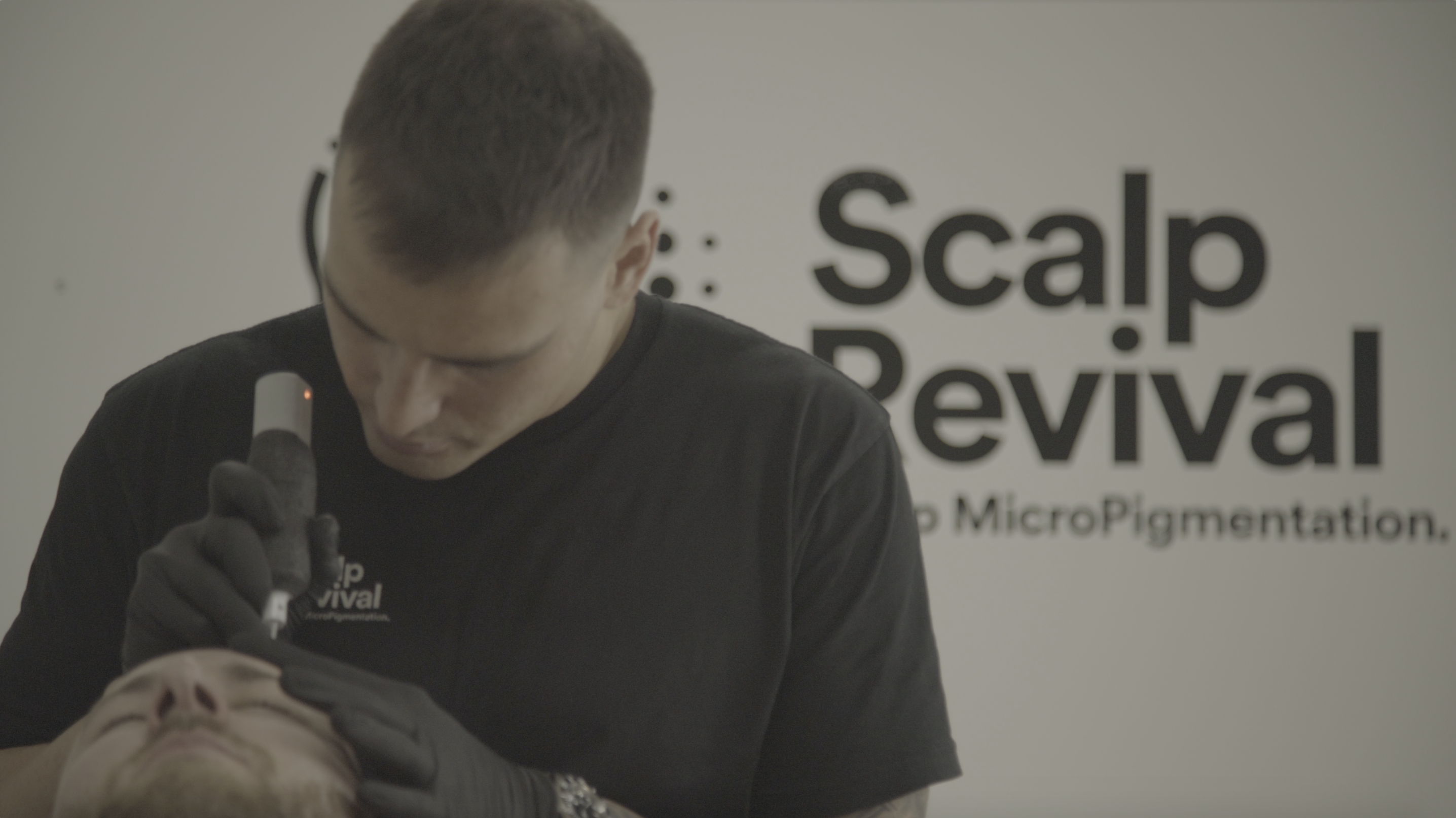Treatments for Hair Loss
Hair loss treatments aim to help prevent hair loss and even help re-grow your hair. Some lifestyle and dietary changes can help reduce thinning hair and overall hair health. There are many hair loss treatments available and speaking to your doctor or dermatologist will help decipher what would be most beneficial for your circumstances. Some common hair loss treatments include:
- Prescription Medication
- Hormone replacement therapy
- Hair transplants
- Wigs and hairpieces
- Scalp micropigmentation
Prescription Medication
There are topical and oral prescription medications that help with hair loss and thinning hair. Finasteride is a prescription for hereditary hair loss in men, whereas Spironolactone would be prescribed for women with pattern hair loss. Finasteride is a long-term oral hair loss treatment that helps stimulate new hair growth and slow down hair loss. It usually takes 4 months to notice changes and must be taken continuously to see continual results. Spironolactone is available in oral form and promotes increased hair thickness and stops further hair loss for women.
Minoxidil can be prescribed for both men and women who suffer from hereditary hair loss. It comes in both an oral and topical form and stimulates hair growth and slows balding. Upon stopping the medication you may find any new hair will not continue to grow. These are generally long-term treatments that require a few months for you to start noticing a difference. But can often come with some unwanted side effects.
Hormone Replacement Therapy
When hormones increase or decrease this can cause physical changes and various symptoms. For women going through menopause or experiencing sudden changes in hair, hormone replacement therapy can be an effective hair loss treatment. Key ingredients in hormone replacement therapy are estrogen and progesterone, which are also the same hormones associated with hair growth. Increasing these hormones helps reduce hair loss. Hormone replacement therapy is not intended to be a long-term treatment and usually, treatment stops once the phase of menopause has passed.
Hair Transplant
Hair transplants are a hair loss treatment if you suffer from thinning hair. Both men and women can be eligible for the treatment. Hair transplantation is a surgical procedure that removes healthy hairs on the head to the balding or thinning areas of the scalp. Some people may require a few sessions to complete the hair transplant, depending on the area being covered. Changes in hair thickness and quantity will begin to show between 6 months to a year and have noticeable results.
Wigs and Hairpieces
While medication and surgical treatments may not always be an option, there are other methods to still feel confident when dealing with hair loss. Wigs, hairpieces and wraps are simple and sometimes affordable alternatives.
Scalp Micropigmentation
Scalp micropigmentation (SMP) is an increasingly growing (no pun intended) option for hair loss treatment. A non-surgical alternative, it can help combat a number of hair issues and creates the illusion of fuller hair and is suitable for almost anybody suffering from hair loss. SMP is also referred to as hair tattooing. An electric machine is used to deposit small dots of pigment onto your scalp. These micro tattoos give the appearance of a real shaven head and achieve a natural-looking dense head of hair in both males and females. Both men and women may opt for SMP as a hair loss treatment as it can also help disguise scars and other blemishes on your scalp. It is a very versatile technique and pigmentation can be adjusted to your skin tone and hair colour, to achieve a natural look with guaranteed results.
SMP is a lasting treatment, generally between 4-6 years before it begins to fade. It can help people who suffer from hair loss from:
- Cancer treatments that cause thinning hair or balding spots
- Those experiencing hair loss due to health conditions, such as alopecia
- Male pattern hair loss and those who want to create the illusion of thicker-looking hair on the scalp
- People wishing to camouflage scars or fill in missing hair
- General hair loss and hair thinning in both males and females
A few sessions of scalp micropigmentation are required to achieve this dense and full-looking pigmentation over the scalp. Generally between 2-3 sessions, but has a lasting impact. Unlike some other hair loss treatments it requires little down time or maintenance. SMP does not stimulate hair growth. Instead the ink is inserted in the scalp in the same direction that the hair grows to replicate a true hair-like follicle that looks completely natural. This treatment is increasing in popularity and becoming the preferred hair loss treatment method for its many benefits such as:
- It’s safe and secure, minimally invasive and does not involve breaking the skin. The procedure is quick and most experience little discomfort.
- Creates a natural looking hairline and even texture of the scalp can be achieved.
- It’s a reliable hair loss solution and can be used after other hair loss treatments.
- The results are guaranteed and require very little maintenance.
You’ll see immediate results from scalp micropigmentation and all in all is a safe and effective form of hair loss treatment. Whether you are achieving the buzz cut image or filling in balding spots, the end result looks very convincing.







